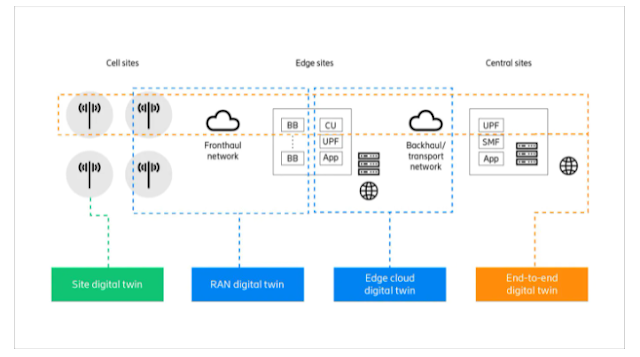For decades, a speculated wave of job-stealing technologies has stirred debate about the role of humans in the labor force alongside automation and AI adds a new wrinkle to the equation.
It's been a century since the word "robot" first entered the human lexicon. In the ensuing decades, automation has leaped from the pages of science fiction with very real-world implications on workforces around the globe. While the early use of these technologies may have focused on the hardware side, advances in AI are ushering in a new automated age, augmenting traditional human roles across industries; including skilled portions of the labor force.
For decades, a speculated wave of job-stealing technologies has stirred debate about the role of humans in the labor force alongside innovation and automation. Approaching an unknowable future and the not-yet-invented technologies, what has the history of automation shown us about the potential road ahead and what could we lose along the way?
Cost of automation: Economics and human labor
Earlier this month, Reign released a report, highlighting sentiments regarding AI and the impacts of these capabilities on the workforce. The findings detail robust growth in AI jobs as well as surging salaries for these workers. For example, Reign found that U.S. AI-related positions increased 21% in the last decade and the average salary surged 27% during this time.
A portion of the survey sought to gauge how concerned workers in various fields were about AI impacting their position. Overall, 54% of respondents were very or moderately concerned about AI "negatively disrupting" their job; across all industries, 36% of respondents believed AI will decrease the total number of positions. Interestingly, there may be educational factors at play within these automation fears.
Juan-Manuel Fluxà, CTO at Reign, said those with at least a bachelor's degree were "more than twice as likely to believe that AI will create more jobs in the future," adding that this "divide in perception is very telling for how education level leads to knowledge and perception of AI."
Education may factor into the perceived threat of AI in terms of personal employment and workforce impact, but a human's skill set and ability to readily upskill amid an evolving labor market could also play a key role in their future livelihood.
Earlier this year, the World Economic Forum predicted that automation, "contrary to popular fears about job losses," would result in a net increase of 58 million jobs. Among the jobs automation will transform, the organization projected 2-in-3 will "become higher-skilled," and the remaining third being "lower-skilled."
Joël Blit, associate professor of Economics at the University of Waterloo, said "predictions are best guesses," but the "reality," is that no one knows how AI and robotics will impact the workforce. Speaking to his own opinion, Blit predicted that there would be job losses as a result of automation, although employment gains in other areas could offset these reductions.
"Many people are failing to understand that the biggest issue is probably going to be not so much job losses from these technologies, as much as the distributional impacts that they are going to have," Blit said.
While some workers with skills "complementary to these technologies" will greatly benefit from this tech, with wage increases to boot, people whose skills are substitutes for these technologies are going to be hurt, according to Blit.
Similar to information and communications technology, he said if these capabilities predominantly end up hurting people in the mid and low ends of skill distribution, then "we will see an increase in inequality."
Moving forward, Blit said there will likely be "a lot of churn" in the labor market, and governments will need to play a part in retraining, as "many jobs will disappear, but many others" that require new skills will be generated.
Evolution of automation and career quality
Tom Hathaway, a Udemy instructor who teaches courses on business analysis and navigating digital transformation, said he's read a lot about servers and transportation workers "being phased out," but other positions, not so much.
"I haven't heard a lot of discussion about business analysts losing their jobs but it would not surprise me if they did," he continued.
Automation negating the need for a human position is one thought to mull over, the quality of the new role augmented by said automation is another point altogether. If these automated processes are creating new positions for humans in these industries, has the general evolution of these sector-specific positions been a net positive or negative for people in these fields?
This is all a matter of perspective, according to Hathaway: For the person being replaced, the new positions often "require higher qualifications," leaving people who do not obtain these new skills "easily out of the picture." At the societal level, he said these new jobs come with more global GDP value-add, making it a perspective "net win."
"Of course, for those who can and do acquire the required skills for the new positions, it is progress at its finest," he continued.
Economics and a premium on human "ingenuity"
Whether automation entails software-heavy digital transformation investments or a so-called dark warehouse named due to its ability to operate with minimal optic-enabling luminescence overhead (unlike traditional human-filled factories), the decision to automate may come down to basic economics and the almighty dollar.
"In many cases tasks could be theoretically automated, but they aren't because it's simply cheaper to pay a human to do that task – and a human is more versatile for retraining when the task likely changes in the future," said Ryan Hill, director in the Gartner HR practice.
It's also important to bear in mind the pace of automation and industry-wide adoption to date. Across industries, a new automated process may take years or even decades to gain widespread usage. Simply put, going all-in on automation isn't so much akin to flipping a light switch as it is to situationally reinventing the lightbulb. The inherent speed of this automation and deployment could also help with the transition for humans in these industries; in essence, softening the blow of automation from a user-experience perspective.
"In a world where we immediately swap out all transactional, repetitive tasks and replace them with strategic difficult ones, the change would likely overwhelm workers," Hill said. But, in reality, he said, this transition is "often much slower," with tasks changing individually "over a sustained period."
"This enables workers to adapt over time and develop new proficiencies that make what was once difficult, simple and repetitive."
On this topic, Hill emphasized that automation does not get rid of workers' "easiest tasks," although it can make more "mentally-taxing" processes easier. As an example, he pointed to use-cases involving a junior lawyer conducting "hours of legal research" and a nurse tasked with prescribing the best triage approach for an incoming patient.
"AI and other emerging technologies can find patterns in data that can help make the hardest decisions easier and better-informed," he said.
Tasks on the creative and social side, according to Hill, "fundamentally require humans," because these undertakings involve "predicting future outcomes, creating new ideas and engaging in interactions with others," areas where AI has difficulty because it is "inherently based on backward-looking existing data."
"While it can find patterns indiscernible to humans, it doesn't yet have the ability fully to see events, create scenarios or anticipate social interactions that haven't yet happened," Hill said. "Instead, it provides data processing and pattern recognition as an input for human ingenuity."
Situationally, increased automation may set a premium on certain intrinsically human capabilities; as Hill explained, AI "implementation increases demand for social-creative skills — the ability to strategize, empathize and think critically."
SEE: AI on the high seas: Digital transformation is revolutionizing global shipping (free PDF) (TechRepublic)
Automation and upskilling: New tech, new skills
As new technologies bubble up, these capabilities have the potential to reshape economies and the labor force. Similarly, as automation takes shape, there is the idea that as positions are replaced, the process creates new related positions for people in these fields. Although these new positions, as the World Economic Forum points out, may be disproportionately higher- or lower-skilled in time. But, how has this thinking played out in the tech sector over the last decade and what impact has this evolution of positions had on employees in this space?
"As automation starts working up the stack starting with the more routine tasks, tech workers have the opportunity to develop deeper skills and explore more innovative solutions," said Seth Robinson, senior director, technology analysis, at CompTIA. "This movement lines up with the shift within companies to make IT more strategic."
Situationally, tech workers have the opportunity to be more aligned with corporate goals as employees have "more bandwidth to explore emerging technology," according to Robinson, which, in turn, gives them a "more integrated position within the organization."
Corporate alignment aside, it's interesting to consider what types of roles could be churned out as new technologies evolve and automation potentially proliferates across industries. Decades ago, as the first welding robots hit assembly lines, even the most forward-thinking technologists may have been hard-pressed to dream up roles such as a Chief Artificial Intelligence Officer or an analytics translator.
That said, 60-80 years from now, what roles will humans still have and what will they bring to the table that software and hardware cannot automate?
"As much as automation is now capable of doing, there are still some incredibly hard problems to solve with algorithms," Robinson said, pointing to autonomous vehicles that have "been on the cusp of advanced capability" for quite some time, yet still have not "broken through to achieve the theoretical promises."
Untapped theoretical promises aside, AI, once unleashed is not without its situational algorithmic shortcomings. Over the last year, AI and algorithms, in general, have come under scrutiny related to potential biases and inequities these capabilities could introduce in industries ranging from healthcare to financial services.
Moving forward, Robinson said humans will be needed to monitor automated systems, seeing as "modern AI produces probabilistic results," people will indeed be able to spot these anomalies and improve algorithmic training as "there is always the chance that there will be something unexpected."
"For the foreseeable future, humans will likely remain involved in situations with even a moderate degree of complexity," he said.
Choosing a career path amid automation
Faced with increasingly agile AI capabilities and decades of automation ahead, the idea of selecting a sustainable career route for the next half-century could be a daunting task for students. Situationally, Hathaway suggested a high school-age student go "heavy on the humanities," as he believes this is the "last fortress that humanity might defend against the encroaching technology."
"Although AI can certainly master technically sound and correct writing, I would like to think that worst case, a future Shakespeare, Goethe or Hemingway could compete and possibly beat it."
As for the occupational long-game, Hathaway said he'd be "more than surprised if AI ever masters true emotional intelligence," although he's willing to wage the agents will be "great at faking it," although he rhetorically questioned the real value of this.
"I would really enjoy seeing them take a crack at what I call 'compassionate creativity,'" he said. "If they can do that, then AI could probably provide better answers to these questions than I can."
About the Author
R. Dallon Adams is a journalist originally from Louisville, Kentucky. His previous work includes a wide spectrum of beats and formats ranging from tech-savvy urban planning initiatives to hands-on gad...






